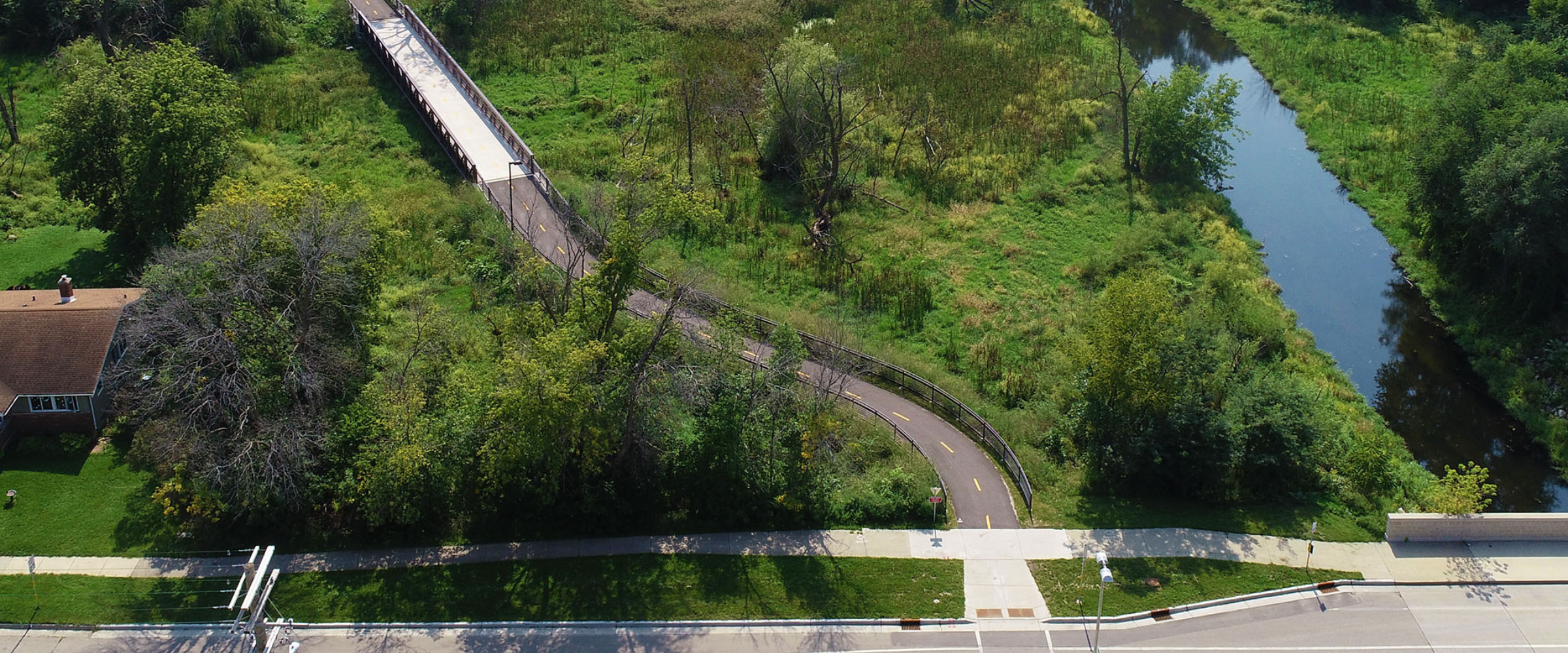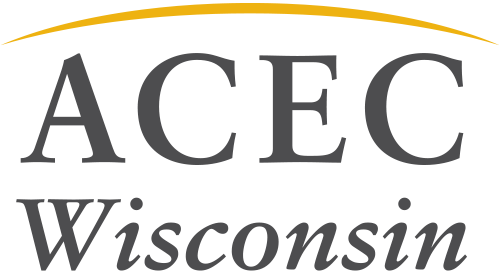Garver Path Preserves Natural Elements & Historic Past
 Written by Aaron Steger, PE, KL Engineering
Written by Aaron Steger, PE, KL Engineering
![]() The City of Madison was motivated to add a pedestrian-friendly, shared-use path to connect an eastside neighborhood to the Capital City Trail and the greater trail system in August 2018. The new path was intended to provide a connection to residential neighborhoods, commercial areas, downtown, and other destinations, as well as help the city uphold its status as one of the top bike-friendly communities in the U.S. In January 2019, the city partnered with KL Engineering, Inc. for design engineering of the new path — Garver Path.
The City of Madison was motivated to add a pedestrian-friendly, shared-use path to connect an eastside neighborhood to the Capital City Trail and the greater trail system in August 2018. The new path was intended to provide a connection to residential neighborhoods, commercial areas, downtown, and other destinations, as well as help the city uphold its status as one of the top bike-friendly communities in the U.S. In January 2019, the city partnered with KL Engineering, Inc. for design engineering of the new path — Garver Path.
The Garver Path design is compelling because it illustrates a design team’s ability to creatively solve problems, responsibly minimize conflict with environmental elements, sustainably use space, conscientiously preserve an area’s historic past, and meet the needs of the city and the greater community.
The team knew creating a functional design for Garver Path would require creativity and resourcefulness due to the complexity of the location. Much of the area is wet and a mapped floodplain. The nearby railroad bridge and historic Garver Feed Mill building are large obstacles the design needed to work around. There were hazardous materials in the soils and impervious areas needed to be delicately managed. The team’s final design incorporated innovative elements that addressed these issues. Below are examples of some of the unique components.
Regard for Natural Elements
In the natural wetlands area, a traditional bridge was selected as the solution for the wettest section of the path to minimize environmental impacts and meet the city’s snow removal and maintenance needs. Beyond the bridge, the highly compressible soils were preloaded and compacted with fill for nearly a year to establish a sturdy foundation for the path before final grading and paving. Additionally, the slide slopes of the path were steepened to minimize the footprint and environmental disturbance. These breakthrough solutions were less environmentally invasive and had the lowest cost, which was important to the city and its residents.
Hazardous Materials Undisturbed
An investigation confirmed the presence of hazardous petroleum products in the soils for the segment of the path running through the historic Garver Feed Mill property. The most effective solution, in this case, was to leave the hazardous materials intact. To accomplish this, the path segment was designed to have a raised profile minimizing grading impact. The solution was effective, avoided costly hazardous materials disposal fees, and is unnoticeable when using the path.
Historic Property Preservation
The Garver Feed Mill is a turn-of-the-century building with a rich agricultural and industrial history. It was recently renovated and has received several historic renovation awards. The design team took care to avoid negative impacts associated with path construction, such as dust and noise, on the historic property.
Instead of building a new path adjacent to the Garver Feed Mill, green pavement marking symbols were utilized on the existing driveway to alert vehicles that the space is to be shared by pedestrians, bicycles, and vehicles.
Limiting Impervious Areas
The original design concept for the Garver Path had a segment of the path situated in the natural area along the west bank of the Starkweather Creek. Consequently, the pathway was moved to the east side of the creek to preserve the natural area. The east side of the creek is more convenient for neighborhood residents, but concerns emerged about the potential for large tree removals and how additional pavement might negatively impact discharged stormwater. The team resolved both issues with a design that converted Starkweather Drive, an existing two-way street, into a one-way street with a bike path. This design element improved safety and access to the path by slowing vehicle speeds and decreasing the distance to cross the street. Widened curb ramps that met ADA accessibility requirements were also included.
Garver Path enhances and extends the area’s thriving multi-modal network by improving mobility, connectivity, and safety while sustainably preserving the natural elements the community enjoys most. The thoughtfully designed pathways include 10-foot-wide asphalt trails and two 14-foot-wide bridges spanning Starkweather Creek. This mile-long connector route now links the community to the popular Capital City Trail and the greater trail system for walking, running, and biking.
About the Guest Blogger
![]() Aaron Steger, PE, has 25 years of experience in all aspects of transportation design and project management. He is the Director of Infrastructure Services for KL Engineering, Inc., a professional civil engineering firm with a core specialization in transportation engineering. The firm has offices in Madison, Green Bay, Menomonie, and Germantown, and offers civil engineering, survey, and environmental services for both public and private clients.
Aaron Steger, PE, has 25 years of experience in all aspects of transportation design and project management. He is the Director of Infrastructure Services for KL Engineering, Inc., a professional civil engineering firm with a core specialization in transportation engineering. The firm has offices in Madison, Green Bay, Menomonie, and Germantown, and offers civil engineering, survey, and environmental services for both public and private clients.

